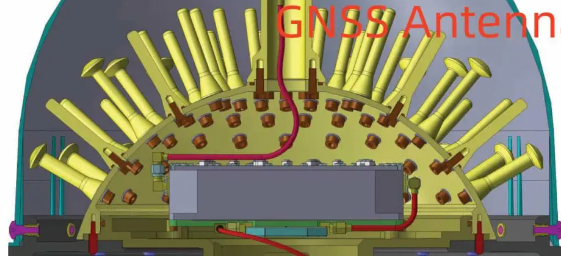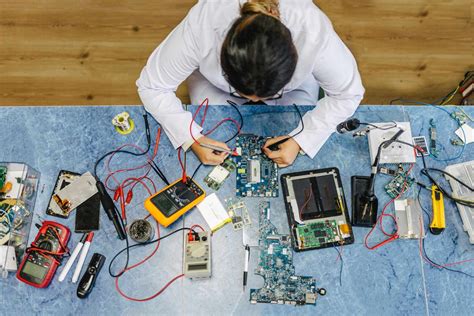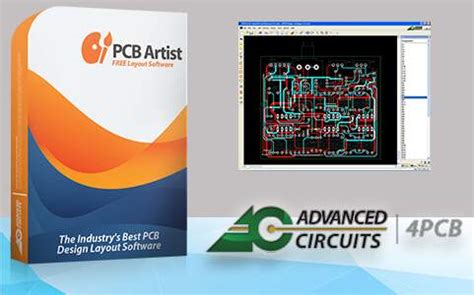Optimizing Efficiency in Board Assembly Processes
Key Takeaways
Optimizing efficiency in pcb assembly processes is crucial for achieving higher productivity and quality in electronic manufacturing. One key takeaway from this exploration is the strong emphasis on best practices that streamline assembly operations. Adopting a systematic approach to pcba workflows can significantly enhance overall output. Innovative techniques, such as the implementation of lean manufacturing principles, not only reduce unnecessary steps but also focus on value-add activities that contribute directly to the end product.
Another important consideration is leveraging the right tools and technologies tailored for board assembly. These can include automated equipment for placement and soldering processes, which minimize human error and increase speed. Additionally, incorporating data analytics allows for real-time monitoring of assembly lines, enabling swift identification of bottlenecks and areas needing improvement.
“Investing in employee training on new technologies often yields returns greater than the initial costs,” highlights a common industry perspective.
Moreover, strategies aimed at reducing waste—such as evaluating material usage and optimizing layouts—can lead to substantial cost savings over time. All these strategies converge towards a common goal: enhancing quality within pcb assembly outputs while ensuring sustainability throughout the production lifecycle. Keeping abreast of future trends in technology will also ensure that production methods remain relevant and efficient in an ever-evolving market landscape.
Introduction to Board Assembly Efficiency
In today’s fast-paced manufacturing environment, the efficiency of pcb assembly processes has become a critical factor for success. Organizations are increasingly focusing on enhancing the performance of their pcba operations to meet growing demands while maintaining high-quality standards. Optimizing efficiency goes beyond merely speeding up production; it encompasses a holistic approach that integrates best practices, innovative techniques, and effective tools. By analyzing every stage of the assembly process, companies can identify bottlenecks and source strategies to streamline operations.
For example, implementing lean manufacturing principles can significantly improve throughput while minimizing waste. Utilizing advanced tools such as automated pick-and-place machines can also bolster productivity and accuracy in pcb assembly tasks. Moreover, investing in training for staff ensures that employees are well-equipped with the knowledge of modern techniques and technologies, further enhancing operational efficiency.
In this competitive landscape, adopting effective measures not only leads to cost savings but also ensures that organizations can scale their operations without compromising on quality. As we delve into key practices and solutions throughout this article, it will become evident how a focused approach to board assembly efficiency transforms businesses and enables them to thrive in the industry.
| Strategy | Description | Benefits |
|---|---|---|
| Lean Manufacturing | Eliminates waste through improved workflows | Reduced costs and increased speed |
| Automation | Implements machines for repetitive tasks | Higher precision and productivity |
| Staff Training | Equips employees with current methodologies | Enhanced skill levels |
Through these efforts in pcba improvements and initiatives aimed at refining processes, companies are well-positioned to adapt to future challenges and demands in manufacturing.
Best Practices for Streamlining Board Assembly Processes
In the field of pcb assembly, streamlining processes is crucial for enhancing overall productivity and efficiency. One of the first best practices involves adopting a systematic approach to layout design to ensure that components are optimally placed. By using advanced software for pcba design, manufacturers can minimize assembly time and reduce errors. Moreover, implementing a lean manufacturing philosophy helps in identifying and eliminating waste throughout the production process. This can be achieved through continuous monitoring and assessment, allowing teams to react swiftly to any irregularities. Furthermore, investing in automated tools can significantly enhance accuracy and speed during assembly, allowing human operators to focus on more complex tasks that require strategic thinking and creativity. Regular training sessions for staff on the latest techniques in pcb assembly not only fosters skill development but also encourages an environment of shared knowledge. Adopting these best practices not only enhances efficiency but also ensures a higher quality of output in all pcba operations, ultimately contributing to a more sustainable manufacturing approach.
Innovative Techniques for Enhanced Productivity
In the realm of pcb assembly and pcba, implementing innovative techniques is essential for boosting productivity and achieving operational excellence. One approach is the integration of automation in assembly processes. Automated systems not only accelerate the speed of assembly but also enhance precision, thereby minimizing human error. Additionally, utilizing modular assembly techniques allows teams to work on different sections of a board simultaneously, significantly reducing overall assembly times. Another effective method involves the application of Lean principles, which focus on eliminating waste in every stage of production. By analyzing workflow and reorganizing processes in a more streamlined manner, companies can significantly reduce lead times and enhance output quality. Furthermore, investing in advanced inspection technologies ensures that potential defects are detected early in the pcb assembly process, thus reducing rework and improving overall quality. Continuous training and skill development for assembly personnel can also lead to greater proficiency and adaptability when implementing new technologies or methodologies. Collectively, these innovative techniques foster an environment where productivity thrives while maintaining a commitment to quality in pcba operations.
Tools and Technologies to Optimize Assembly Operations
In the ever-evolving landscape of pcb assembly, leveraging the right tools and technologies is crucial for enhancing operational efficiency. First and foremost, automation plays a significant role in reducing labor costs and improving accuracy. Automated assembly equipment can effectively manage repetitive tasks, thereby allowing human operators to focus on more complex activities that require critical thinking. Additionally, implementing smart manufacturing solutions such as the Internet of Things (IoT) can lead to real-time monitoring of processes, ensuring any inefficiencies are addressed immediately.
Furthermore, utilizing advanced PCB inspection tools minimizes the risk of defects by identifying issues early in the assembly process. By adopting these innovative technologies, companies can achieve not only increased productivity but also a notable reduction in waste, ultimately contributing to a more sustainable production cycle. Employee training on these tools is equally important; well-trained staff can fully utilize capabilities offered by advanced machinery and software. With an integrated approach that combines automation, smart technology, and skilled workforce training, organizations can significantly optimize their pcba processes and maintain high standards of quality throughout their operations.
Reducing Waste in Board Assembly: Strategies and Solutions
In the realm of pcb assembly, minimizing waste is critical not only for optimizing resources but also for enhancing the overall efficiency of operations. Implementing lean manufacturing principles can significantly aid in reducing excess materials and minimizing defects, which directly correlate with waste reduction. One effective strategy is to conduct a thorough analysis of the pcba workflow to identify bottlenecks and redundant steps. By adopting methods such as value stream mapping, teams can visualize and eliminate unnecessary processes, thereby improving turnaround times. Additionally, investing in high-quality materials and precision-focused equipment ensures that components meet specifications from the outset, reducing the likelihood of rework or scrap generation.
Another powerful tactics involves fostering a culture of continuous improvement among assembly line workers. Encouraging input from employees who handle pcb assembly daily can yield valuable insights into areas where waste occurs, as these individuals are often best placed to identify inefficiencies. Regular training sessions focused on best practices in waste management can further empower personnel, equipping them with the knowledge to implement subtle but effective changes that lead to significant reductions in waste.
Moreover, leveraging innovative tools such as automated inspection systems can ensure that any defects are caught early in the production cycle, preventing flawed items from progressing further along the assembly line. The integration of advanced technologies not only curtails material wastage but also enhances overall product quality by providing real-time feedback on process performance. By synthesizing these strategies into a cohesive approach, organizations can achieve notable improvements in their pcb assembly operations while fostering an environment focused on sustainability and efficiency.
Quality Improvement Measures in Board Assembly
In the pursuit of excellence within pcb assembly processes, implementing effective quality improvement measures is crucial. One primary strategy involves the adoption of lean manufacturing principles. By focusing on value-added activities and eliminating waste, teams can streamline operations in pcba production. Regular training and upskilling of assembly personnel also play a significant role; a well-informed workforce is more likely to identify potential quality issues early on, preventing defects before they escalate. Another vital element is incorporating automated inspection systems, such as optical inspection (AOI) technology, which ensures that each pcba meets high standards through real-time monitoring of quality parameters. Furthermore, establishing a robust feedback loop between production and design teams can facilitate ongoing improvements in the assembly process by addressing common defects and implementing design changes proactively. Ultimately, fostering a culture of continuous improvement and cultivating innovation within the workforce will lead to enhanced product quality and increased efficiency in board assembly operations.
Case Studies: Successful Efficiency Improvements in Board Assembly
Examining real-world applications of efficiency improvements in pcb assembly processes reveals a wealth of inspiring success stories that can inform future practices. For instance, a leading electronics manufacturer implemented a lean manufacturing approach to refine their pcba workflows. By closely analyzing their assembly line, they identified bottlenecks that impeded productivity and wasted valuable resources. The organization adopted a just-in-time inventory system, enabling them to synchronize supply chain operations more effectively. This shift not only reduced excess materials but also improved responsiveness to customer demand, ultimately leading to faster turnaround times for products.
Another noteworthy example comes from a smaller firm specializing in custom pcb assemblies. They invested in automated assembly technologies that integrated with their existing procedures. By employing robotic placements and precise soldering techniques, they achieved remarkable accuracy and efficiency in their production line. This transition allowed the company to scale operations without compromising quality, resulting in decreased production costs and increased client satisfaction.
These case studies underscore the significance of embracing innovative strategies and technologies within the realm of board assembly. Organizations that actively seek out and implement such enhancements can expect not only increased productivity but also improved quality outcomes and reduced waste—a trifecta of benefits that positions them advantageously in today’s competitive market.
Future Trends in Board Assembly Technology and Efficiency
As the pcb assembly landscape continues to evolve, various trends are emerging that promise to reshape efficiency in operations. One significant trend is the integration of advanced automation solutions into pcba processes. Robotics and artificial intelligence are increasingly being utilized to enhance precision and speed in assembly tasks, reducing the risk of human error and optimizing workflow efficiency. Alongside automation, the adoption of smart manufacturing principles, such as the Internet of Things (IoT), allows for real-time monitoring of board assembly operations. This capability empowers manufacturers to make data-driven decisions that enhance productivity and resource allocation.
Furthermore, innovative materials and technologies are being developed to streamline pcb assembly methods. For instance, the use of improved soldering techniques not only decreases preparation time but also enhances connection reliability—a critical factor for high-quality pcba outputs. Additionally, sustainability is taking center stage as organizations increasingly focus on eco-friendly practices to minimize waste during the board assembly process. This commitment helps reduce costs while also meeting regulatory standards and consumer expectations for sustainable practices.
Collaboration among cross-functional teams is also becoming more common, ensuring that insights from production, engineering, and quality assurance are shared effectively. Such teamwork enhances problem-solving capabilities and fosters an environment where continuous improvement can thrive. As these trends shape the future landscape of board assembly, staying ahead will be key for companies aiming to sustain competitive advantages while optimizing their operations in an ever-changing technological environment.
Conclusion
In summary, the drive towards optimizing efficiency in pcb assembly processes is essential for organizations aiming to stay competitive in today’s fast-paced market. By adopting best practices, companies can streamline their pcba operations, leading to improved productivity and reduced lead times. Innovative techniques, such as automation and real-time monitoring, play a pivotal role in enhancing the overall assembly workflow. Furthermore, leveraging advanced tools and technologies not only supports an efficient assembly line but also aids in minimizing waste, ensuring that resources are utilized effectively. Continuous quality improvement measures also contribute significantly to achieving optimal outcomes in board assembly operations. As new trends emerge in technology and processes related to pcb assembly, staying informed will be crucial for businesses to adapt and thrive. Embracing these strategies will ultimately lead to better performance, reduced costs, and higher customer satisfaction in the realm of pcba production.
FAQs
What is the significance of optimizing board assembly processes?
Optimizing board assembly processes is crucial for enhancing the efficiency of PCB assembly operations. This leads to improved productivity and reduced production time, which are essential in meeting market demands and maintaining competitiveness.
How can companies reduce waste in PCB assembly?
Companies can reduce waste in PCBA by implementing lean manufacturing principles, which focus on minimizing unnecessary steps and utilizing resources effectively. Techniques such as just-in-time (JIT) inventory management can also help in reducing excess material usage.
What are some innovative techniques for enhancing productivity in board assembly?
Innovative techniques include automation of repetitive tasks through the use of robotics, streamlined workflow layouts, and employing real-time monitoring systems. These advancements can significantly accelerate the PCBA process while maintaining high-quality standards.
Which tools and technologies are essential for optimizing assembly operations?
Critical tools for optimizing assembly operations include computer-aided design (CAD) software, automated inspection systems, and specialized PCB assembly equipment that support faster production cycles while ensuring accuracy.
How does quality improvement impact PCB assembly processes?
Quality improvement measures foster a robust production system by preventing defects before they arise. Techniques such as continuous training for personnel and regular equipment maintenance not only extend the life of machinery but also ensure that components meet quality specifications consistently.







